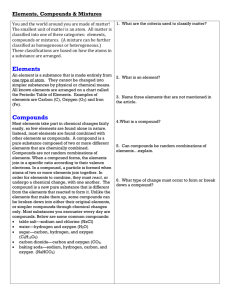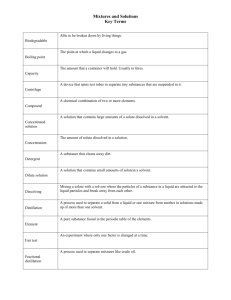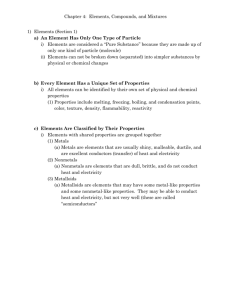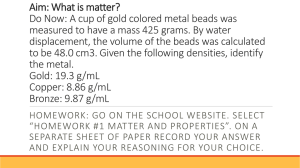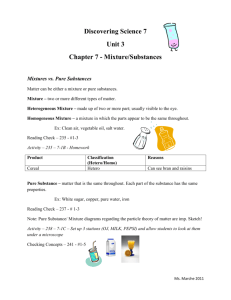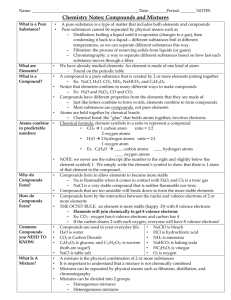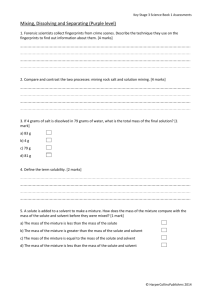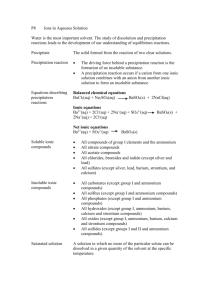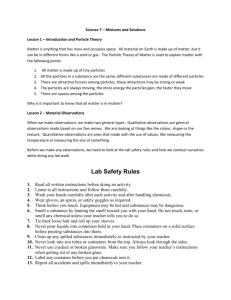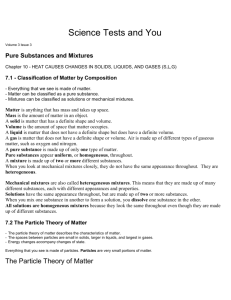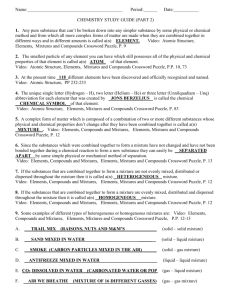Chapter 3 – Elements, Compounds, and Mixtures
advertisement
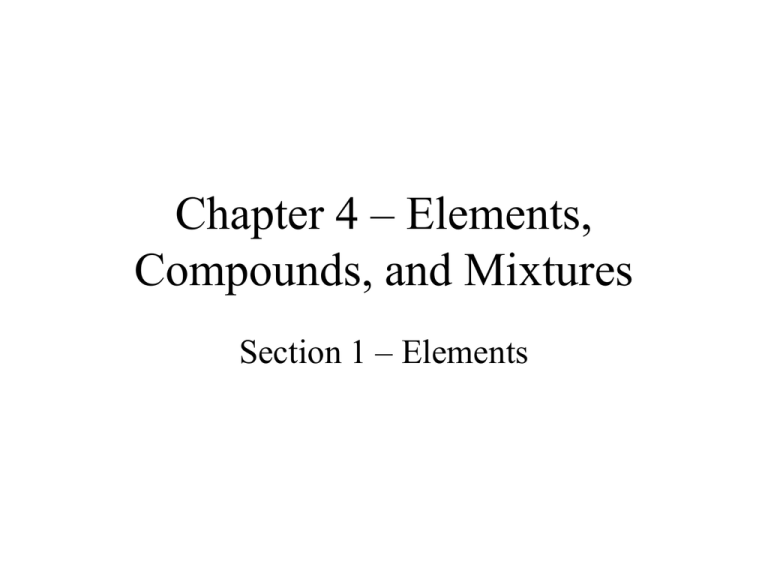
Chapter 4 – Elements, Compounds, and Mixtures Section 1 – Elements ELEMENTS • Pure substance that cannot be separated into simpler substances. • Made up of atoms • Simplest form of matter • Ex: Carbon (C), Helium (He), Oxygen (O) PROPERTIES • Elements have a unique set of properties. • Ex: boiling point, density, reactivity with acid, flammability • Used to classify elements. – Grouped into categories – Elements in same group have shared properties 3 CATEGORIES 3 CATEGORIES 3 CATEGORIES Chapter 4 – Elements, Compounds, and Mixtures Section 2 – Compounds COMPOUNDS • Composed of two or more elements that are chemically combined. • Two or more atoms join together to form molecules. • Must undergo a chemical change. • Most substances are compounds, few elements are found alone in nature. PROPERTIES • Each compound has a unique set of properties just like elements. • Compounds have different properties than the elements that they are made of. • Can be broken down into elements or simpler compounds through chemical changes. Chapter 4 – Elements, Compounds, and Mixtures Section 3 – Mixtures MIXTURES • Made of two or more substances – Any combination of elements, compounds, or both • NOT chemically combined – No chemical change occurs – No change to substances identity • Examples: salt water, steel, air, cereal, pizza, chicken soup 2 Kinds of Mixtures • Homogeneous mixture – every sample of the mixture is the same – Examples: salt water, flat soda • Heterogeneous mixture – not every sample of the mixture is the same. – Examples: chicken soup, pizza, salad dressing. SEPARATING MIXTURES • By physical change • Examples: sorting, filtering, heating, cooling SOLUTIONS • Has an even distribution of particles throughout the mixture – Homogeneous mixture – Examples: salt water, kool-aid • Formed by dissolving solute into solvent – Solute – the substance that is dissolving – Solvent – the substance that the solute is dissolving in PROPERTIES OF SOLUTIONS • Concentration – measure of the amount of solute dissolved in a solvent. – Concentrated – solution has more solute – Dilute – solution has less solute • Saturation – how much solute a solvent can hold – Unsaturated – solution can hold more solute – Saturated – solution has all the solute it can hold PROPERTIES OF SOLUTIONS • Solubility – amount of solute needed to form a completely saturated solution. – Changes for each substance as temperature changes SUSPENSIONS • Particles are large enough to separate themselves from a solvent based on density. – Insoluble – particles not able to dissolve – Heterogeneous mixture – Examples: chicken soup, salad dressing. COLLOIDS • Particles are small enough to mix with a solvent but not large enough to separate out. • Heterogeneous mixture • Properties of both solutions and suspensions – Spreads out like a solution – Does not dissolve like a suspension • Examples: JELL-O, fog, mayonnaise
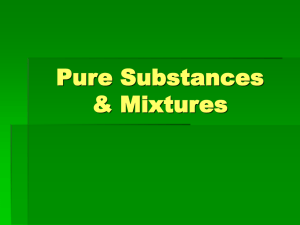
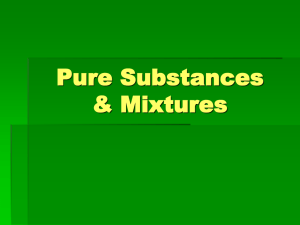

![Chem 3 Elements, Compounds, and Mixtures PPT [11/15/2013]](http://s2.studylib.net/store/data/005796663_1-9247eb9205249afa1115390decddad23-300x300.png)

